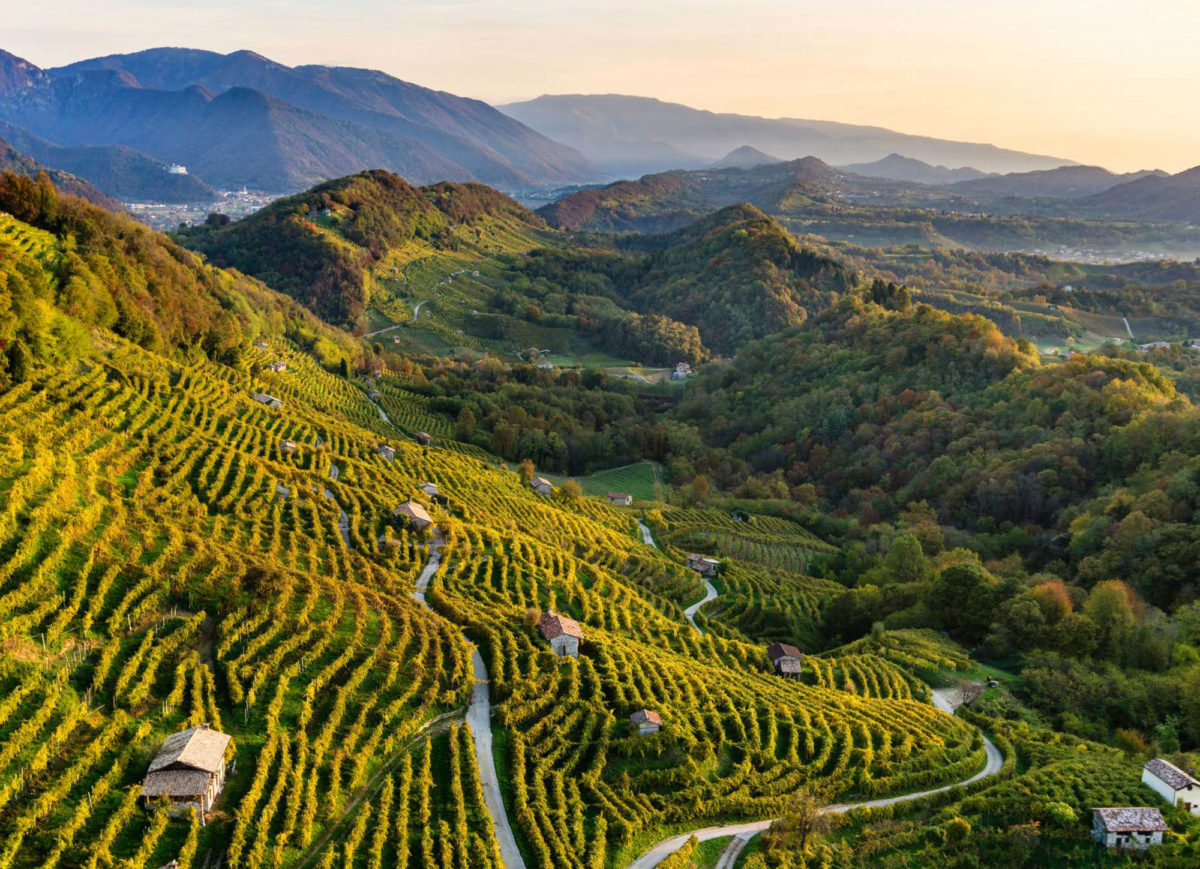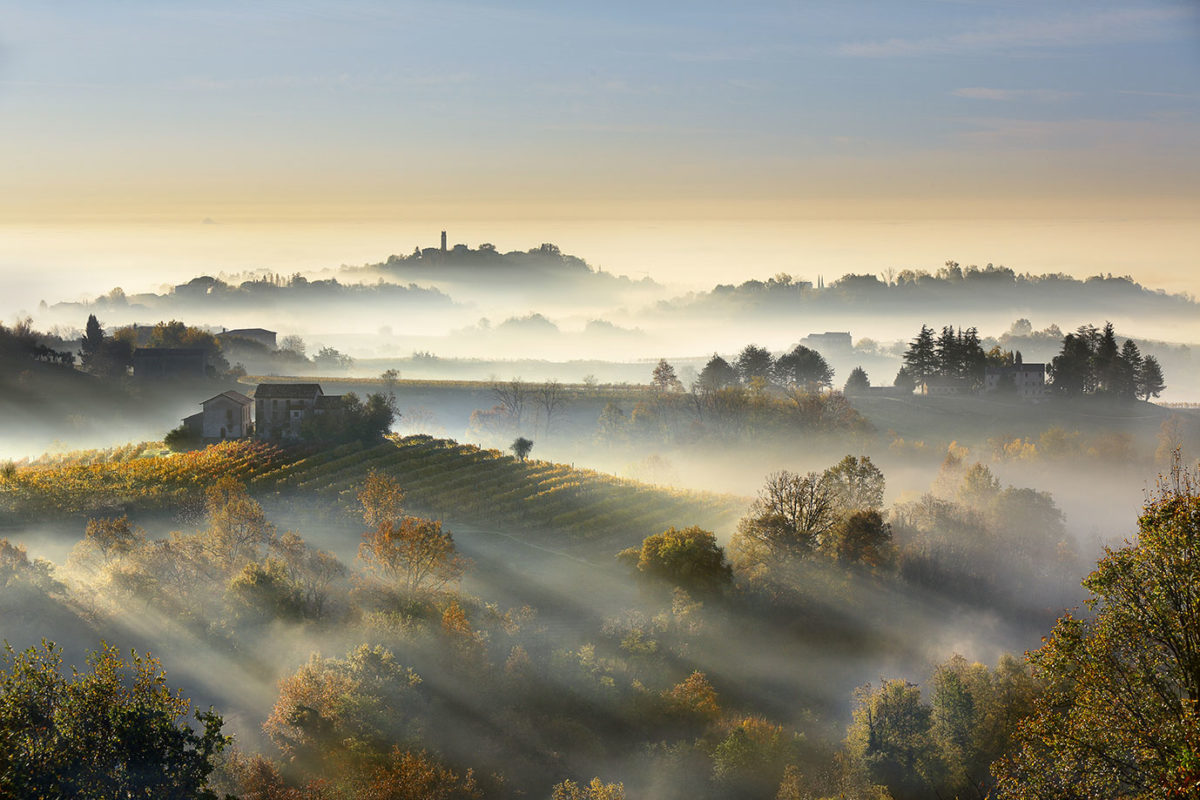The Unesco Hills

The Hills of the Prosecco of Conegliano and Valdobbiadene Unesco Heritage: on 7 July 2019 the UNESCO Assembly recognizes the World Heritage "The Hills of the Prosecco of Conegliano and Valdobbiadene" and inscribes them in the list of cultural landscapes to be protected.
The site “The hills of Prosecco di Conegliano and Valdobbiadene” UNESCO World Heritage Site includes the hilly strip that from Valdobbiadene extends eastwards to the Municipality of Vittorio Veneto. This area is characterized by a particular geomorphological conformation, called hogback, consisting of a series of spiky and steep reliefs extended in an east-west direction and interspersed with small valleys parallel to each other. In this difficult environment, man has been able to adapt over the centuries, shaping steep slopes and perfecting his agricultural technique. Expression of this adaptive ability is the ridge, a particular type of terracing, which uses grassed land instead of stone and which is preferred to other accommodations as it contributes to the solidity of the slopes and reduces soil erosion. Evidence of the use of the ridge in the territory dates back to the 16th and 17th century reports; today, thanks to the cartographic studies carried out for the candidate site, it is estimated that the presence of the ridge is 20% (2015 figure) compared to 28% in 1960. A decrease that mainly affects the areas with lower slope, but which confirms as in the steep slopes the ridge is maintained and chosen as the best technique: 67.33% and in fact located on slopes facing between 15 ° and 60 °. This work of thousands of small winemakers has allowed the creation of a multiple agricultural landscape both in form and composition. A landscape defined as “mosaic”, highly fragmented and interconnected, characterized by vineyard plots interspersed with an important presence of wooded and unproductive elements that function as an effective ecological network capable of providing quality ecosystem services. The site is protected through the identification of two areas: the so-called buffer zone and the commitment zone. In fact, according to the UNESCO guidelines, a site must have two types of areas within it:
- the core zone, or the area recognized as a world heritage site, the object of protection and protection;
- the buffer zone, or the so-called “buffer zone” bordering on the core zone that aims to guarantee the protection, protection and conservation of the site and in which services are normally concentrated according to the core zone.
The core zone has an extension of 9.197,45 ha, does not coincide with the administrative boundaries and includes the hilly territories in the Municipalities of Valdobbiadene, Vidor, Miane, Farra di Soligo, Pieve di Soligo, Follina, Cison di Valmarino, Refrontolo, San Pietro di Feletto, Revine Lago, Tarzo, Vittorio Veneto. The area has been identified in this way because it represents the attributes of the rural landscape, through which the candidacy is based. The main elements that can be recognized are therefore: 1) the cordonate geomorphological system, defined as “hogback”, which characterizes the hilly area between Valdobbiadene and Vittorio Veneto, both from a scenic point of view and as a limiting factor for its centuries-old anthropization and agricultural use; 2) the widespread presence of the grapevine cultivation covered with grass as an original adaptive solution to the strong hill slope, thus guaranteeing also a hydrogeological sustainability and an optimization of viticultural techniques; 3) the presence of a strongly fragmented and interconnected agrarian mosaic, characterized by vines interspersed with a strong presence of wooded and unproductive elements that function as an effective ecological network capable of providing quality ecosystem services.
The buffer zone has an extension of 9,769.80 ha, does not coincide with the administrative boundaries and includes the hilly territories falling as well as in all the other municipalities of the core area also in the Municipalities of Conegliano, Susegana and San Vendemiano. It is characterized, with respect to the core areas, by a different landscape, always hilly and valuable, but with less slope. Inside it is possible to recognize valuable elements, attributable to the main characteristics of the candidacy and that despite being more compromised due to urbanization they constitute a bond and a strong historical and geographical connection between these hills of lesser slope to those rugged of the core zone.
The commitment zone is an area even more distant from the boundaries of the core zone that has the objective of further protecting the landscape of the candidate area. The area includes the Municipalities that have adhered to a Protocol stipulated with the Region, whose purpose is to equip itself with a common regulation for the management, protection and preservation of the rural landscape, especially the viticultural one. This area and outside the core and buffer zone, includes a rather vast territory constituted, in addition to all the previously mentioned Municipalities, also by the Municipalities of the Cappella Maggiore, Colle Umberto, Codognè, Cordignano, Fregona, Godega di Sant’Urbano , Mareno di Piave, Moriago della Battaglia, Sarmede, San Fior, Sernaglia della Battaglia, Segusino, Santa Lucia di Piave and Vazzola.
Texts, Photos and Videos: Consorzio di Tutela del Conegliano Valdobbiadene Prosecco Docg www.prosecco.it Cartella Stampa 2019
Image gallery
Video





